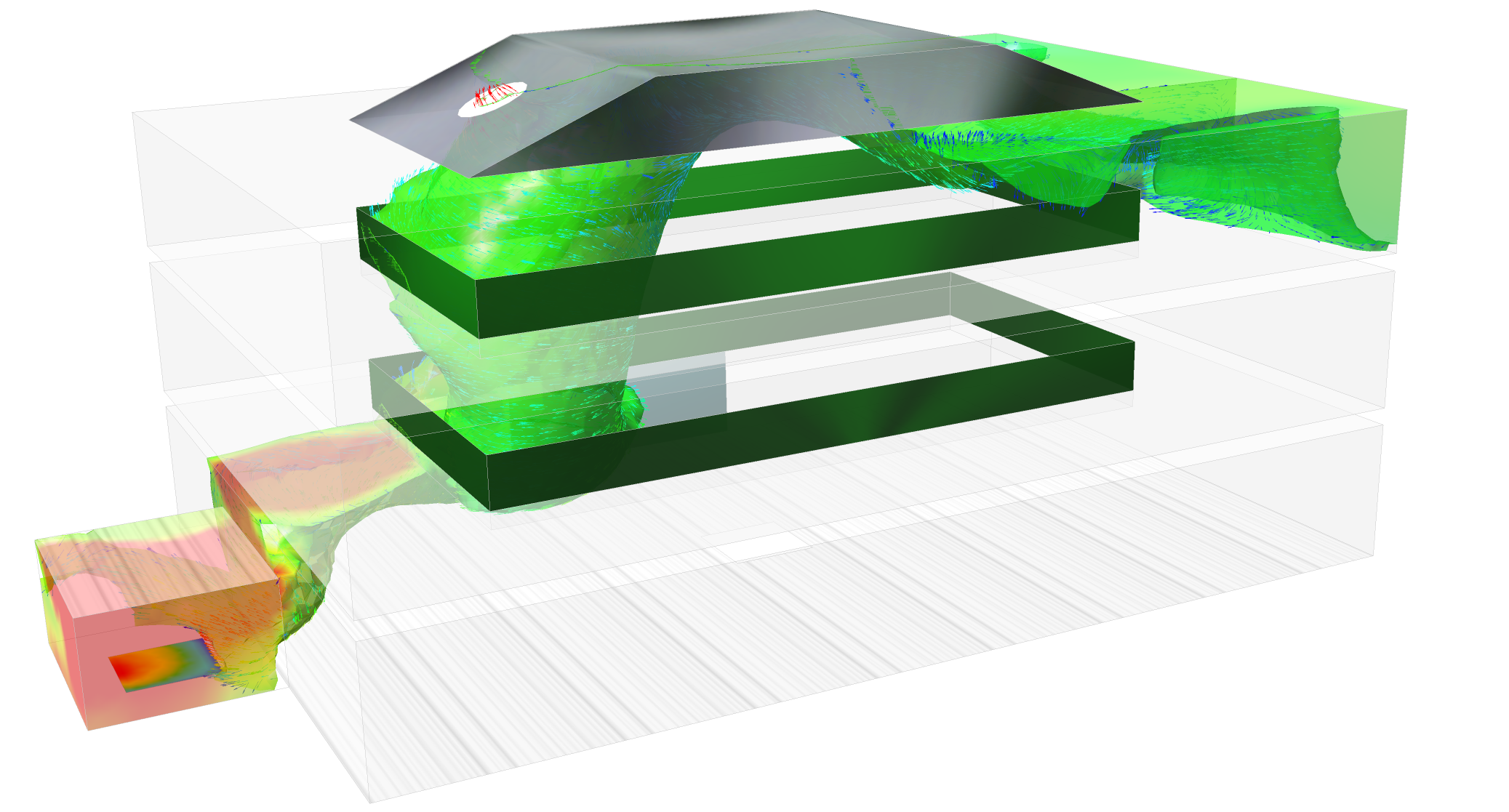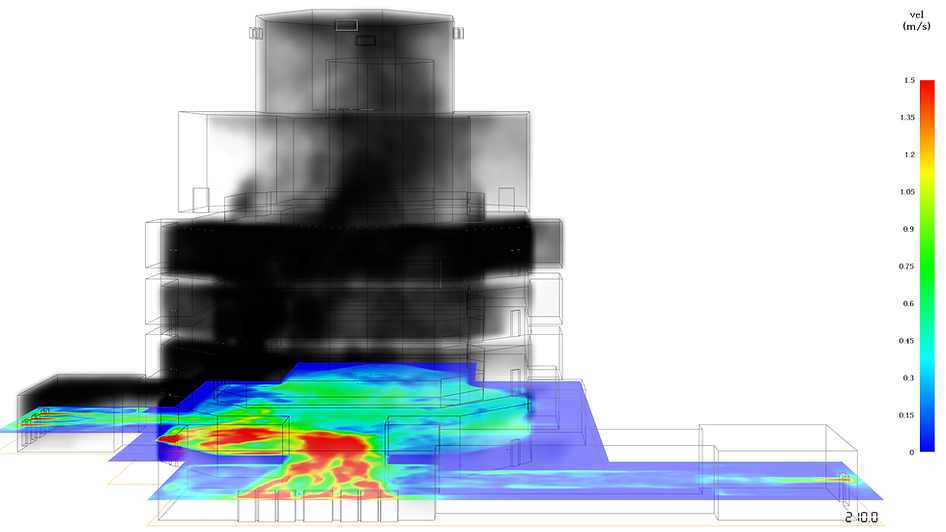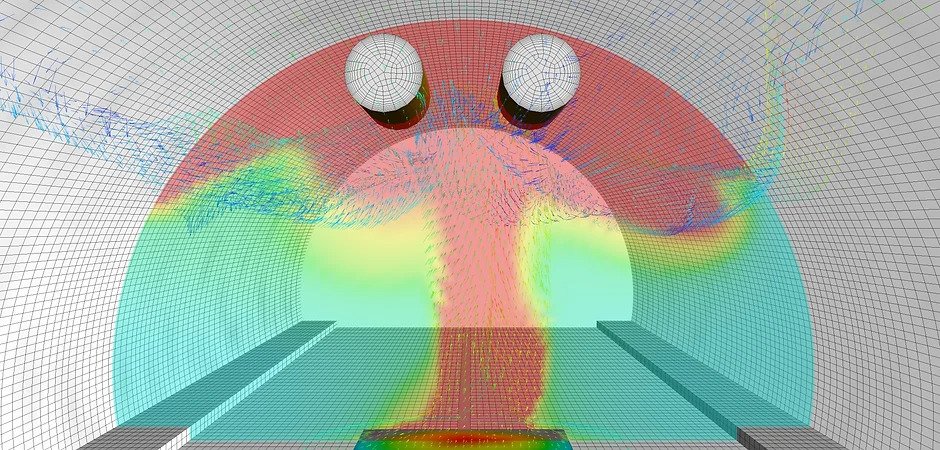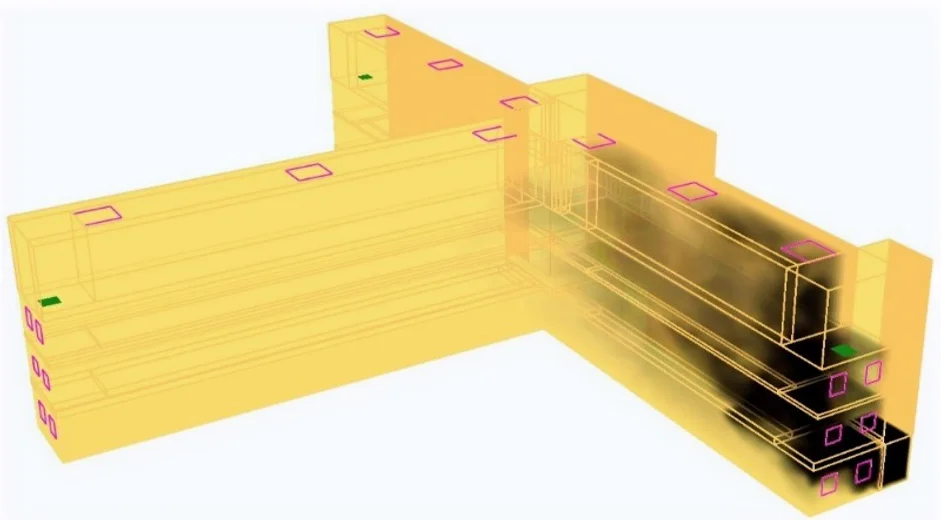SMOKE CONTROL SYSTEMS
Using CFD Analysis to Design Smoke Control Systems that Meet Qatar Civil Defense Standards
Flowpak is a company specialising in designing and engineering smoke control systems using computational fluid dynamics (CFD) analysis. CFD is a tool that uses mathematical algorithms and computer modelling to simulate and analyze the flow of fluids (such as air) in a given space. Using CFD, Flowpak can accurately predict how smoke will behave in different scenarios and design smoke control systems that meet the requirements of the Qatar Civil Defense, the National Fire Protection Association (NFPA), and the American Society of Heating, Refrigerating, and Air-Conditioning Engineers (ASHRAE).
Some examples of how Flowpak might use CFD in the design of smoke control systems to ensure compliance with these standards and guidelines include:
- Predicting the movement of smoke within a building during a fire to determine the most effective locations for smoke control measures, such as smoke exhaust vents or fans, to meet the requirements set by the Qatar Civil Defense and the NFPA.
- Analyzing the effectiveness of different smoke control strategies, such as using pressurized stairwells or mechanical ventilation systems, to ensure that the design meets the standards and guidelines set by the Qatar Civil Defense, the NFPA, and ASHRAE.
- Modelling the flow of smoke through different building configurations to optimize the design of smoke control systems and minimize the risk of smoke spreading to other areas of the building to meet the requirements set by the Qatar Civil Defense and the NFPA.

Flowpak’s CFD Analysis Solutions for Smoke Control at the Museum of Islamic Art in Doha
In 2022, Flowpak used its expertise in CFD to validate the smoke management strategy for the Museum of Islamic Art in Doha.
To validate the smoke management strategy, Flowpak used CFD to simulate and analyze the movement of smoke within the museum to determine the effectiveness of the smoke control measures.
Flowpak engineers assessed the tenability criteria of visibility and temperature by predicting the resulting conditions in different areas of the museum based on the flow of smoke and comparing these predictions to the necessary standards and guidelines, such as those set by the Qatar Civil Defense and the National Fire Protection Association (NFPA).
Flowpak also used CFD to analyze the effectiveness of different smoke control measures and strategies, such as smoke exhaust vents, pressurized stairwells, and mechanical ventilation systems.
Based on their findings, they made recommendations for changes or improvements to the smoke management strategy to better meet the necessary standards and guidelines.
Overall, Flowpak’s expertise in using CFD for smoke control system design allowed the designer to accurately assess the tenability criteria of visibility and temperature based on code and standard and to recommend changes or improvements to the smoke management strategy as needed to ensure the safety of the Museum of Islamic Art in Doha.

Meeting NFPA 502 Standards with Flowpak’s CFD Smoke Control Design for Hamad International Airport Tunnel Safety
The National Fire Protection Association (NFPA) 502 standard is a set of guidelines that specify the necessary measures for controlling smoke and ensuring the safety of individuals in the event of a fire in a road tunnel.
These guidelines include requirements for smoke exhaust vents, pressurised escape routes, and other measures designed to prevent smoke from spreading and provide safe evacuation routes for individuals.
Flowpak specialises in designing and engineering smoke control systems using computational fluid dynamics (CFD) analysis.
Flowpak was selected to use its expertise in CFD to develop a smoke control system for the Hamad International Airport road tunnel.
To meet the requirements set by the Qatar Civil Defense and the NFPA 502 standard, Flowpak used CFD to simulate and analyse the movement of smoke within the tunnel to determine the most effective locations for smoke control measures, such as smoke exhaust vents and Jet fans.

Designing Fire Safety with CFD: Flowpak’s Effective Ventilation System for Hamad Hospital
Ventilation is an essential aspect of fire safety in hospitals, as it can help prevent the spread of smoke and other toxic gases and provide a means of escape for patients and staff.
In the event of a fire in a hospital, it is crucial to have a ventilation system in place that can remove smoke and other hazardous gases from the building and provide fresh air to the occupants.
According to NFPA 101, the Life Safety Code, hospitals must have a ventilation system capable of maintaining a minimum of 20 CFM of outdoor air per person in all occupied building areas.
This requirement is based on the idea that a sufficient fresh air supply can help dilute and remove smoke and other toxic gases from the building.
In addition to providing fresh air, the ventilation system should also be designed to exhaust smoke and other hazardous gases from the building in the event of a fire.
Computational Fluid Dynamics (CFD) is used to design and optimise the ventilation system in a hospital to ensure that it meets the requirements of NFPA 101 and other relevant codes and regulations.
By running simulations using CFD, Flowpak engineers can predict the flow of air and the dispersion of smoke and other gases within the hospital and use this information to design a ventilation system that effectively removes smoke and other hazardous gases from the building.

